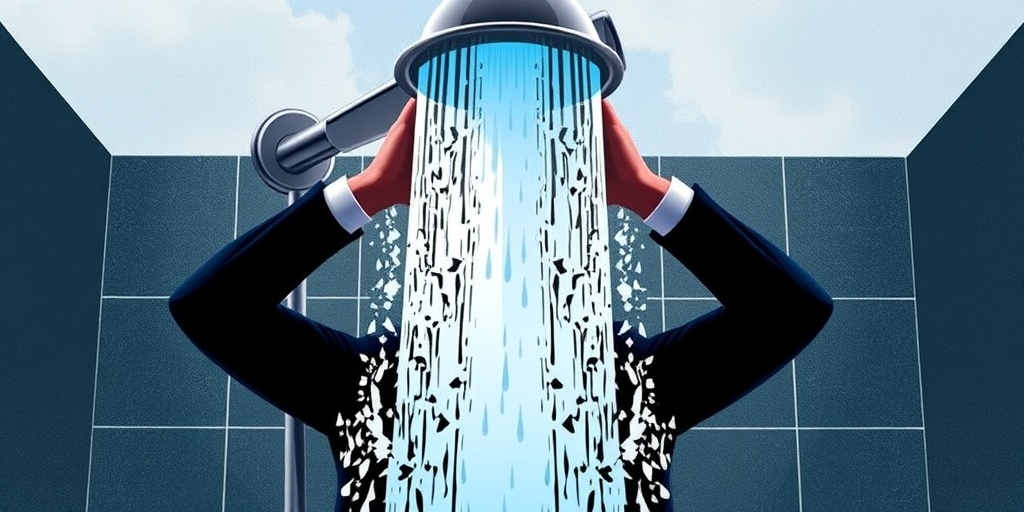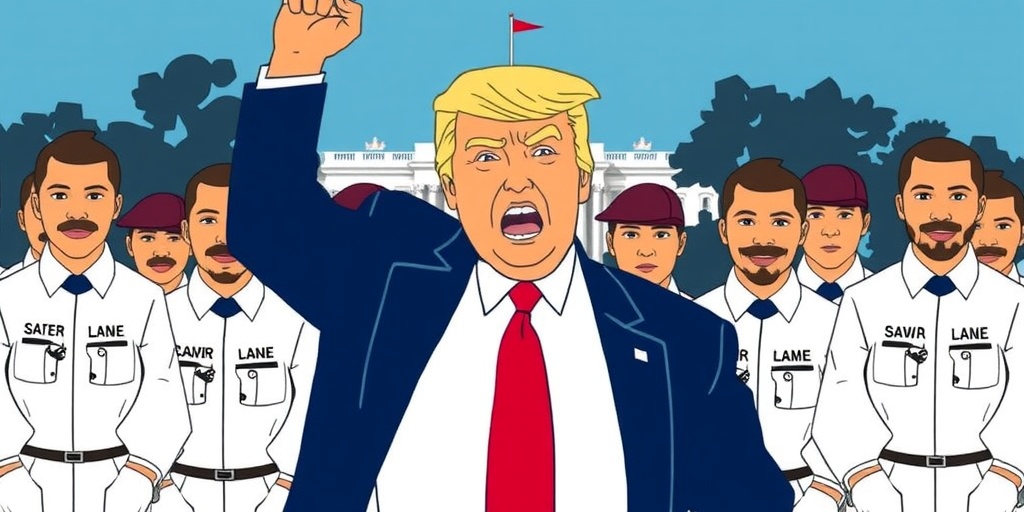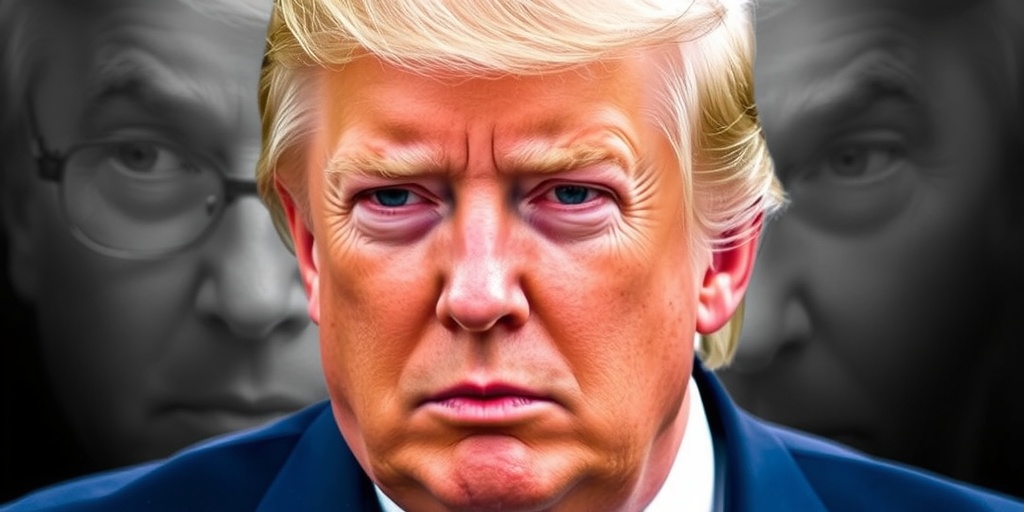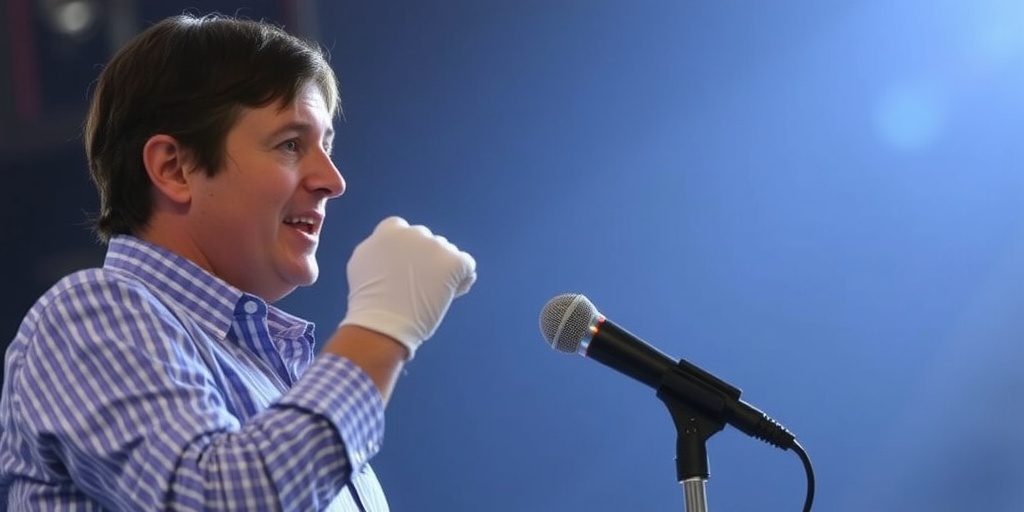Now Reading: Trump Revokes Biden’s Showerhead Water Flow Limit
-
01
Trump Revokes Biden’s Showerhead Water Flow Limit
Trump Revokes Biden’s Showerhead Water Flow Limit

Trump Targets Low-Flow Shower Heads with New Executive Order
In a move that garnered significant media attention on Wednesday, former President Donald Trump not only rekindled discussions around tariffs but also reignited his long-standing clash with the regulations governing low-flow shower heads. In an unexpected twist, Trump signed an executive order aimed at easing water flow restrictions from shower heads, effectively directing Energy Secretary Chris Wright to eliminate definitions put in place during the Obama administration.
This action reflects Trump’s persistent efforts to combat low water pressure, a concern he’s expressed in the past, particularly regarding his experiences in high-rise buildings in New York. The executive order he signed marks an echo of the objectives he sought during his first term, which were ultimately obstructed by the Biden administration. At the heart of the new directive is the intention to increase water flow rates, specifically emphasizing the need to permit higher usage for multiple nozzle shower systems.
The White House released a statement celebrating the decision, asserting, “No longer will shower heads be weak and worthless.” This resonated with Trump’s previous sentiments shared on various platforms, where he lamented the challenges he faced in ensuring his hair remained impeccable when using traditional shower heads.
Mr. Trump publicly expressed his displeasure about low water pressure yet again during the signing ceremony for the new order: “I like to take a nice shower, take care of my beautiful hair,” he declared, painting a vivid picture of his showering routine. Trump continued, “I stand under the shower for 15 minutes until it gets wet. It comes out drip, drip, drip; it’s ridiculous.” This commentary highlighted his dissatisfaction with the current standards and emphasized his desire for a more powerful showering experience.
Critics have often dismissed Trump’s fixation on shower head regulations as trivial, but they are demonstrative of a broader ideological battle over environmental regulations and consumer rights. Supporters of the original low-flow regulations argue that they play a critical role in water conservation, particularly in areas where water is a limited resource. Despite these objections, the former president’s followers frequently applaud his relentless pursuit of what they consider to be common-sense adjustments to overbearing regulations.
The executive order reinstates provisions from a federal law enacted in 1992, which imposed a maximum water flow rate of 2.5 gallons per minute for shower heads. However, under the Obama administration, regulations were tightened further to require that the 2.5-gallon limit applied individually to each shower head rather than collectively across multiple nozzles. This adjustment was intended to ensure that water conservation measures were effectively implemented.
Toward the end of his first term, Trump had enacted a rule that allowed each individual nozzle of a multi-nozzle shower head to discharge 2.5 gallons per minute, imposing no caps on the number of nozzles a shower could have. However, the Biden administration overturned this rule in 2021, reigniting the debate over water usage standards in residential settings.
Many experts in environmental policy have cautioned against loosening regulations on water flow, emphasizing both the environmental impact and the potential strain on municipal water supplies. These arguments are part of a larger discourse surrounding sustainability and the collective responsibility to manage resources more effectively. As climate change continues to pose significant challenges worldwide, the conservation of water through such regulations is seen as a dire necessity by many environmental advocates.
Trump’s stance on low-flow shower head regulations offers a glimpse into his administration’s approach to governance, where issues often perceived as niche became rallying points for his base. The way he frames these discussions, focusing on personal anecdotes like his haircare routine, aims to connect with everyday citizens who may feel impacted by broader regulatory measures.
As this latest executive order takes effect, it remains to be seen how it will influence consumer behavior and the plumbing industry. Will homeowners rush to upgrade their shower heads, or will they feel the pull of environmental responsibility weigh heavier in their decision-making processes? The ongoing feud with low-flow regulations demonstrates the complexities of balancing consumer desires with environmental conservation efforts in contemporary society.
In conclusion, Trump’s renewed focus on shower head regulations encapsulates a larger ideological conflict over environmental policy and personal preference. As regulations fluctuate, so too will societal norms surrounding water usage and conservation, creating an ongoing dialogue around these seemingly mundane yet surprisingly contentious issues.
Stay Informed With the Latest & Most Important News
Previous Post
Next Post
Previous Post
Next Post
-
 01New technology breakthrough has everyone talking right now
01New technology breakthrough has everyone talking right now -
 02Unbelievable life hack everyone needs to try today
02Unbelievable life hack everyone needs to try today -
 03Fascinating discovery found buried deep beneath the ocean
03Fascinating discovery found buried deep beneath the ocean -
 04Man invents genius device that solves everyday problems
04Man invents genius device that solves everyday problems -
 05Shocking discovery that changes what we know forever
05Shocking discovery that changes what we know forever -
 06Internet goes wild over celebrity’s unexpected fashion choice
06Internet goes wild over celebrity’s unexpected fashion choice -
 07Rare animal sighting stuns scientists and wildlife lovers
07Rare animal sighting stuns scientists and wildlife lovers





















